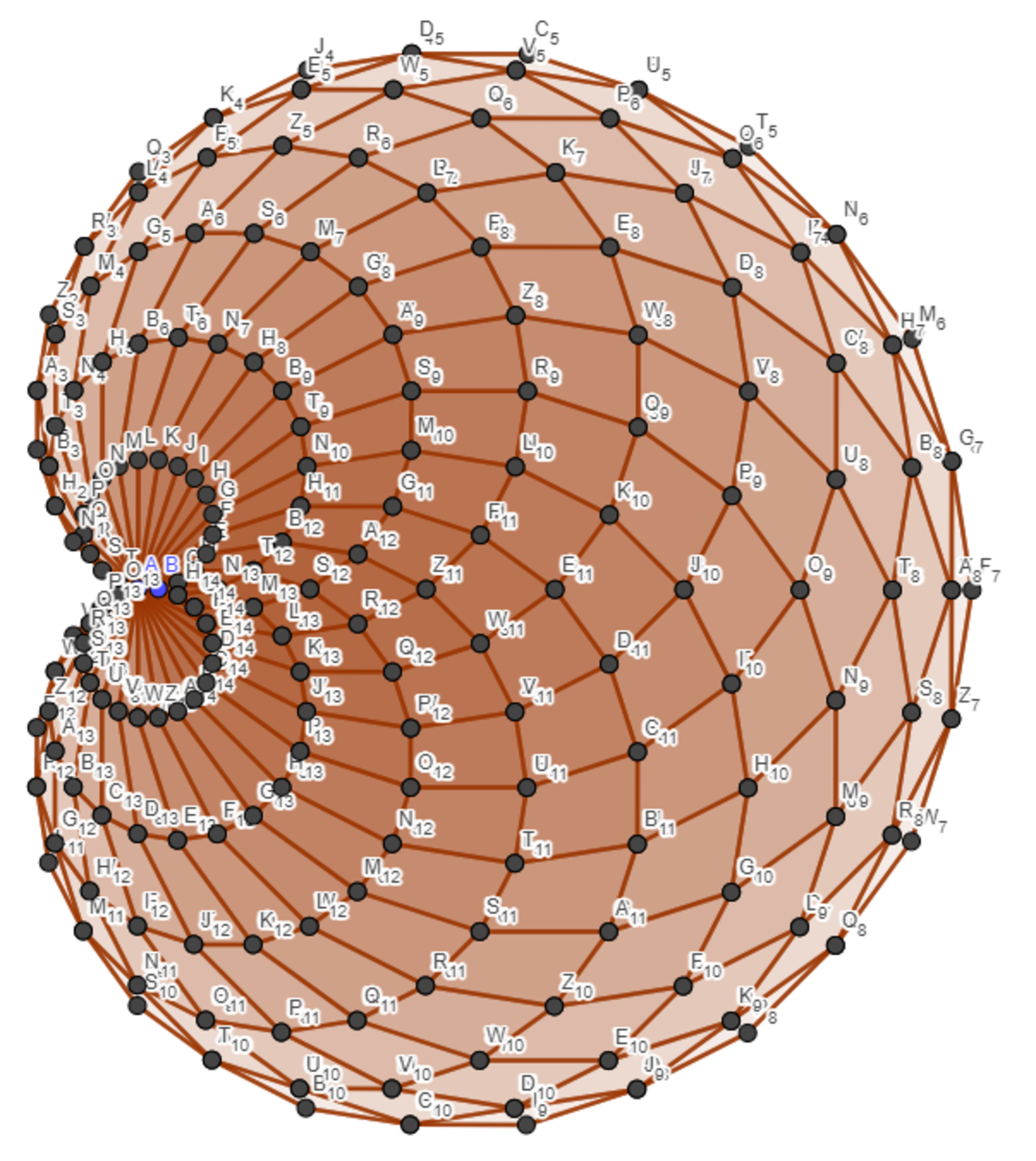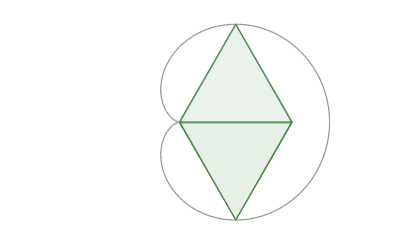CardioGon
The N-gon ABCDE..... is regular and has side length АВ=1 unit.
Second N-gon is regular and has side AС.
Third N-gon is regular and has side AD.
Forth N-gon is regular and has side AE
....

If the area of the total figure is for ,
find
here .
Give answer .
The answer is 14.
This section requires Javascript.
You are seeing this because something didn't load right. We suggest you, (a) try
refreshing the page, (b) enabling javascript if it is disabled on your browser and,
finally, (c)
loading the
non-javascript version of this page
. We're sorry about the hassle.
The diagram in the question may remind us that a cardioid can be drawn as the envelope of circles passing through a common point O , whose centres lie on another generating circle also passing through O . (See here , for example.) This suggests that instead of drawing the n -gons, it's a little easier to consider their circumscribed circles.
Let's say the original n -gon has a vertex at O , a vertex at P 1 ( 1 , 0 ) , and its remaining n − 2 vertices P 2 , P 3 , ⋯ , P n − 1 above the x -axis.
The centroid of this polygon has coordinates G ( 2 1 , 2 1 cot n π ) . All of its vertices lie on the circle C with centre G and radius 2 1 csc n π .
Consider a point Q on C . Construct a new n -gon with O Q as an edge (oriented as per the diagram). It's (fairly) easy to show that the circumcircle C Q of this polygon has its centre on another circle, S . Since all of the C Q pass through O , by definition, this means the envelope of the C Q is a cardioid. The circle S has radius a = 2 1 csc 2 n π ; so the area of the cardioid is given by S ( n ) = 2 3 π a 2 = 8 3 π csc 2 n π
As n increases, the approximation of using circumcircles instead of polygons gets better and better; also csc n π ≈ π n so the limit is n 4 S ( n ) → 8 π 3 3 and the answer we need is 1 4 .
For fun, if instead of fixing the sidelength of the starting polygon as 1 we make it 2 sin 2 n π , this keeps the cardioids the same size, and we get the following as we vary n :